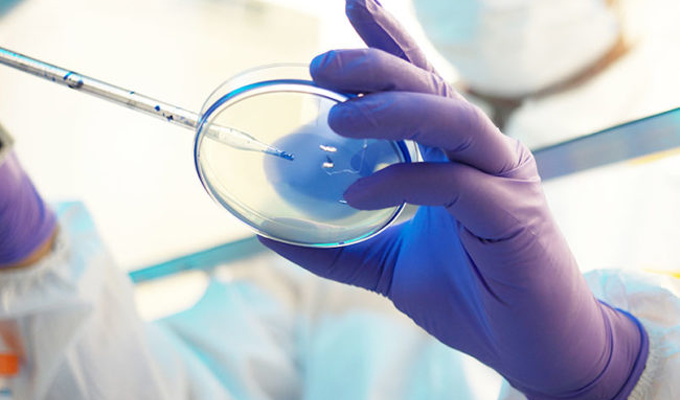Bleeding Problems
Common Bleeding Problems:
Bruising (Hematoma) | Injury | Nosebleeds (Epistaxis) | Rectal Bleeding | Vaginal Bleeding
What Causes Bleeding Problems?
Bleeding problems may be due to many different things. Most likely a result of injury, or trauma, but bleeding problems also may be due to how your blood forms a blood clot. Your body is full of blood vessels, and smaller versions of blood vessels, called capillaries. These different types of blood vessels carry oxygen and nutrients to your tissues. As a result, bleeding can occur anywhere in the body, either inside or out, if there is damage to your blood vessels or capillaries.
Hemostasis, is the stopping of bleeding from damaged blood vessels. If you have a "disorder of hemostasis," blood disorder bruising or bleeding problems such as frequent nosebleeds (epistaxis) may occur. Blood clots form in many ways. Things that are necessary to form a blood clot include:
Platelets:
- These are tiny cells that are made in the bone marrow. Your blood platelet level can be measured by drawing a complete blood count (CBC). This is done by placing a needle in your vein, and collecting a sample of blood. Normal platelet counts are 150,000-400,000 (although this may vary from laboratory to laboratory).
- If your blood platelets are too low from chemotherapy, or your disease, and you are at risk for bleeding problems, your doctor or health care provider may suggest a blood platelet transfusion, if he or she thinks it will improve your health status.
- Your may have low blood platelets from other bleeding disorders, such as thrombotic thrombocytopenia purpura (TTP), or idiopathic thrombocytopenic purpura (ITP). Your health care provider will determine the best way to treat your disease, which may not include blood platelet transfusions, but may include steroids (like Prednisone), and other forms of immune therapy.
Blood Clotting Factors:
- These are found in your blood, and are mostly made in the liver. The blood clotting factors work with the platelets to form a blood clot. If you have problems with your liver, you may have difficulty forming a blood clot, making you susceptible to bleeding problems.
How Your Blood Will Form A Clot:
In normal individuals, platelets collect at the site of bleeding. Along with another type of blood clotting factor (called von Willebrand's factor), the platelets and the clotting factor will work to form a "plug", or blockage in blood flow, at the site of bleeding.
Then, through a period of minutes to hours, other blood clotting factors will travel to the site of bleeding, where the original "plug" was formed, to make a more permanent blood clot. This is known as a fibrin clot.
There may be many reasons why you are at risk for bleeding problems. Some of the most common reasons that you have bleeding problems include:
- That there is trauma or injury to your body.
- You may be missing some of the blood clotting factors necessary to stop bleeding.
- Since the liver makes nearly all the clotting factors in your blood, except for platelets and von Willebrand's factor, you may not be able to form a blood clot if you have certain types of liver disease.
- You may have low blood platelets. This could be due to:
- Underproduction of blood platelets - from chemotherapy, cancer in the bone marrow (such as leukemia, lymphoma, or multiple myeloma), viruses, drugs, or certain vitamin deficiencies.
- Increased destruction - There may be a problem with your spleen or your immune system, and your body is attacking and destroying the blood platelet cells.
- Certain drugs may cause low blood platelets as a side effect, such as Heparin Sodium (a blood thinner, used to treat blood clots in your legs, lungs, or anywhere in your body). Laboratory examinations may be performed to learn more about your bleeding problems, such as nosebleeds or blood disorder bruising.
Common Laboratory Examinations May Include:



 A complete blood count (CBC) - By looking at your blood hemoglobin (Hgb) level, your health care provider may see if you are experiencing a loss of blood. A CBC will also look at your blood platelet counts, to see if your blood platelets are low.
A complete blood count (CBC) - By looking at your blood hemoglobin (Hgb) level, your health care provider may see if you are experiencing a loss of blood. A CBC will also look at your blood platelet counts, to see if your blood platelets are low.- Partial thromboplastin time (PTT) - this may show if you are missing or low in some of the necessary blood clotting factors. This is a screening tool that will allow your doctor to determine what additional, and more specific, blood tests you will need.
- Platelet studies - if you have bleeding problems and some of your other laboratory values are normal, your health care provider may do special tests on your blood platelets. This is to see if your platelets are helping the other blood clotting factors to form blood clots, as they should.
The process of blood clotting is a complex process. Any disruption in the process may cause bleeding problems. If you have any unexplained bruising or bleeding, or it seems to take you a long time to stop bleeding, contact your healthcare provider for an evaluation.
Note: We strongly encourage you to talk with your health care professional about your specific medical condition and treatments. The information contained in this website about bleeding problems and other medical information is meant to be helpful and educational, but is not a substitute for medical advice.
Related Side Effects
Bleeding Problems has related side effects:
Clinical Trials
Search Cancer Clinical Trials
Carefully controlled studies to research the safety and benefits of new drugs and therapies.
SearchPeer Support
4th Angel Mentoring Program
Connect with a 4th Angel Mentor and speak to someone who understands.
4thangel.ccf.org
